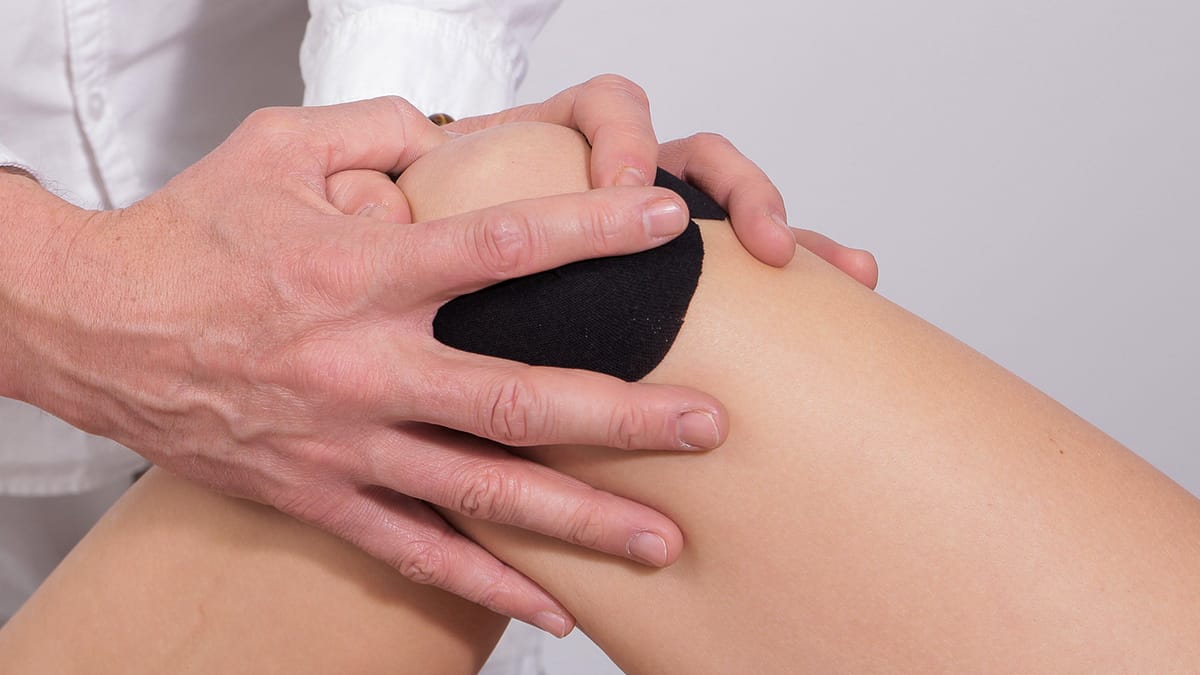Finding Cheaper Osteoarthritis Treatment
high drug prices

Nearly one-quarter of Americans are living with some form of arthritis. That figure amounts to more than 54 million people, 24 million of whom report that their daily activities are limited, and one-quarter of whom say that they suffer from severe joint pain on a regular basis.
Of these 54 million people, about 32 million of them are suffering specifically from osteoarthritis. It’s the most common type of arthritis for a variety of reasons. The good news is that pain from osteoarthritis can be treatable, especially if managed early before too much damage is done to the joint.
Of course, there are varying degrees of severity here, and not everyone responds to the same osteoarthritis treatment or medication. The good news is that there are multiple treatment options available. Obviously, one of these options is medication designed to treat the pain associated with osteoarthritis.
As is the case with most prescription medications in the United States, arthritis medications tend to be rather expensive — much more expensive than they are in basically every other country. Fortunately, NorthWestPharmacy.com is able to offer the same medications at a lower price.
Let’s talk about osteoarthritis, how you can treat it, and how much more affordable your medication can be if you order it through an online pharmacy internationally.
What is Osteoarthritis?
Osteoarthritis is a form of arthritis in which the cartilage in the affected joint begins to break down. Cartilage is what allows our joints to move fluidly and keeps our bones from grinding against each other when weight is placed on the joint, or when moving around.
Osteoarthritis is most likely to occur in the hands, hips, and knees, which makes sense considering these are the joints we use (and abuse) most frequently. Osteoarthritis can also affect your feet and spine — obviously two other areas that are very important for mobility and general quality of life.
We need our hands to manipulate objects, work, cook, clean, pay bills, etc. We use our hips, knees, and feet when we walk, squat down to pick something up off the floor (which most adults do incorrectly, which can damage the knees), exercise, get off the couch, and basically every other movement we go through during the course of a day.
And our spines — well, they’re critical for movement. Obviously.
For this reason, osteoarthritis is often called a "wear and tear" disease. Because the cartilage actually breaks down, it’s classified as a degenerative disease. Once the damage has been done to the joint, the only way to fix it is to have a joint replacement.
Because osteoarthritis is a use-base condition, it is more common in people over the age of 45 but is still possible in younger age groups as well, including rare cases in teenagers’ spines.
Damage typically manifests itself via swelling, pain, stiffness, and of course, inflammation in the affected joints. There are some practices typically recommended for osteoarthritis treatment, in addition to medication prior to the surgical option being exercised.
Osteoarthritis Treatment Options

Physical Therapy
Most of the time, physical therapy is recommended for people suffering from osteoarthritis. Strengthening the muscles surrounding the joint helps take some of the pressure off of the point itself.
For example, this is very common with osteoarthritis of the knee. Our knees take a lot of pressure because they’re so low in our bodies. They literally help carry our weight around, and since we sit for a good portion of the day, our muscles are not as used to movement and activity as they used to be.
As our muscles lose their memory (yes, that’s a real thing), they can weaken, which forces our bodies to rely on the joints themselves. If we can keep our muscles strong, we can protect and preserve our joints for as long as possible.
Obviously, that’s merely a guideline and does not apply in all cases. Someone can exercise regularly and still develop osteoarthritis. That being said, there are still plenty of exercises that are low-impact, such as swimming, yoga (which is highly variable based on skill level and flexibility), and tai-chi.
Surgical Replacement
Joint replacement surgery is more complicated in the hand than it is in the hip or the knee. It’s not impossible, but there’s physically less to work with and the amount of healthy tissue present is critical.
When joint replacement surgery is performed in the hands, the main goal is to improve mobility and grip. Because of the wear and tear involved in using these joints, the implants tend to wear out and would need to be replaced again.
Adding to the already-complex nature of the surgery, the more times it’s done, the more scar tissue is left, which makes subsequent procedures more dangerous and less effective. Generally speaking, the success rate of joint replacements in the hand is considered to be lower than that of hip or knee replacement.
Medication
And finally, medication is another option for osteoarthritis treatment that is quite popular. People often begin with something like Tylenol (acetaminophen). At the outset, this may help relieve mild-to-moderate osteoarthritis pain.
Topical analgesics are also commonly used early on, such as Biofreeze, BenGay, Aspercreme, and IcyHot. These come in various forms (gels, creams, lotions), which is sometimes the determining factor in which products people choose.
If acetaminophen doesn’t work, people may move on to NSAIDs (nonsteroidal anti-inflammatory drugs) like Advil or Motrin (ibuprofen), Aleve (naproxen), or aspirin. Overall, NSAIDs are reasonably safe, but they have been known to cause stomach and intestinal issues (such as bleeding), so they are generally recommended on an acute, rather than long-term basis.
Additionally, some people choose to take supplements to support their joint health to varying degrees of success. One of the most popular is glucosamine-chondroitin, which contains natural substances found in joints. Some people also incorporate bone broth into their diets for the same purpose.
If over-the-counter measures aren’t cutting it, doctors typically turn to medication prior to considering surgical options. Here are five of the most popular prescription medication (or medical device) treatments for osteoarthritis, how much they cost, and how you can save money on them.

5 Popular Prescription Treatments for Osteoarthritis
Euflexxa
Euflexxa is an injectable prescription medication classified as a viscosupplementation treatment for osteoarthritis. Viscosupplementation is a method of injecting hyaluronic acid (or something very similar) directly into the joint, and typically used when patients haven’t responded to other forms of osteoarthritis treatments.
The active ingredient in Euflexxa is sodium hyaluronate, which is a derivative of hyaluronic acid. Sodium hyaluronate is similar to the fluid that already exists in and around your joints. If the term hyaluronic acid rings a bell, it may be because it’s in many skincare products, including face wash, lotion, and serums.
Euflexxa was initially approved by the FDA in 2004. There is no generic available at this time and is still rather expensive — it’s also an injection, which also makes it more expensive.
In the United States, you can expect to pay anywhere from $1,000.00 to $2,000.00 cash for three 2mL syringes of Euflexxa. The price differences stem from whether or not you have access to a coupon (the pharmaceutical industry’s non-solution for exorbitantly high prices).
At NorthWestPharmacy.com, we sell Euflexxa for a much lower price — about $350.00 for the same three syringes. This savings will range between about 65% and 83%.
Three syringes worth of Euflexxa should stay in the body and provide pain relief for about six months. Theoretically, you should only have to purchase Euflexxa twice per year.
An additional cost you’ll need to consider is that a physician or registered nurse will need to administer your injection to make sure it goes into the right place in your joint. You can call your insurance company (if applicable) or your doctor’s office to try to figure out what this service will cost.
Be sure to ask if the price will be the same for each injection — typically, the injections are administered about a week apart. If you have to go in once per week for three weeks, will you be charged the same price every week? Or is it all in one billing code?
Synvisc
Synvisc (hylan) is an injectable medication made from Hyaluronan, which comes from chicken combs (the red growth at the crest of a chicken’s head that looks like spikes but is not sharp). Synvisc is named after the synovial fluid, which is the fluid around the cartilage in the knee that helps lubricate the joint.
Similar to Euflexxa, Synvisc is injected (again, by a doctor or registered nurse) into the synovial cavity of the knee.
Synvisc was approved in 2015. In the United States, you can expect to pay a cash price of about $1,535.00 for the standard three syringes (same as Euflexxa).
At NorthWestPharmacy.com, we sell the same three syringes for about $490.00 — a savings of about 68%.
Synvisc should last anywhere from two to three months, although some people experience pain relief up to six months. You should plan on purchasing Synvisc at least twice per year, but possibly more, depending on how long the injection lasts for you.
Synvisc One
Synvisc One is the same product as regular Synvisc, but put together into one syringe. Instead of getting three 2mL injections, you’d get one 6mL syringe. Theoretically (because the dosage is the same), it should last the same amount of time as regular Synvisc — anywhere from two to six months.
The cash price of Synvisc One in the U.S. is about $1,435.00. At NorthWestPharmacy.com, we sell it for about $450.00 — a savings of about 67%.
Orthovisc
Orthovisc is similar to Euflexxa in that the active ingredient is sodium hyaluronate. The difference is the dosage — you can get the same three 2mL syringes, or you could purchase just one 2mL syringe.
Being able to purchase a smaller dose could be helpful for people who are on a budget, or simply don’t need as much. Additionally, you wouldn’t want to buy more than you needed and have it expire before you’re able to use it.
In the U.S., you can expect to pay anywhere from $1,500.00 to $3,000.00 for three syringes of Orthovisc. A single syringe will run between $500.00 and $1,000.00. Again, this depends on the coupons you have access to.
At NorthWestPharmacy.com, we sell three syringes for about $300.00 and one syringe for about $100.00 — that’s a savings of about 80-90%, regardless of the number of syringes purchased.
Orthovisc can last up to six months with three or four syringes. Of course, this varies by person, and requires a doctor or registered nurse to administer the medication.
Hyalgan
Hyalgan also uses sodium hyaluronate as its active ingredient but is more affordable than any of the others on this list. In many ways, it combines the best of both worlds in terms of dosage and price.
Hyalgan can be purchased in either one syringe or three syringe quantities. In the U.S., one syringe will cost between $150.00 and $400.00. Three syringes will cost between $435.00 and $1,200.00.
At NorthWestPharmacy.com, you’ll pay closer to $85.00 for a single syringe and $245.00 for three — that’s a savings of 43-79% and 47-80%, respectively.
Like the others listed here, you can expect three syringes to last up to six months.
Getting Started with a Canadian Online Pharmacy and International Drugstore
As always, double-check the ingredient label with your doctor if you have dietary restrictions or are prone to allergies. Osteoarthritis treatment in particular oftentimes involves animal products because that’s the most natural way to help support cartilage health. If this is an issue for you, discuss it with your doctor to find a solution that doesn’t use animal products.
If you’re interested in purchasing osteoarthritis medication from a Canada pharmacy online or international medications site, please don’t hesitate to call us at 1-866-539-5330 with any questions you may have. Our customer service representatives are available seven days a week for whatever you may need — help placing an order, answering questions, or even putting you in touch with one of our licensed pharmacists.
If you feel you have everything you need to place your order, you can do so at any time. If you are trying to reach us outside of business hours, feel free to email us. We’ll get back to you as soon as possible. Regardless of the method that works best for you, we look forward to helping you soon.